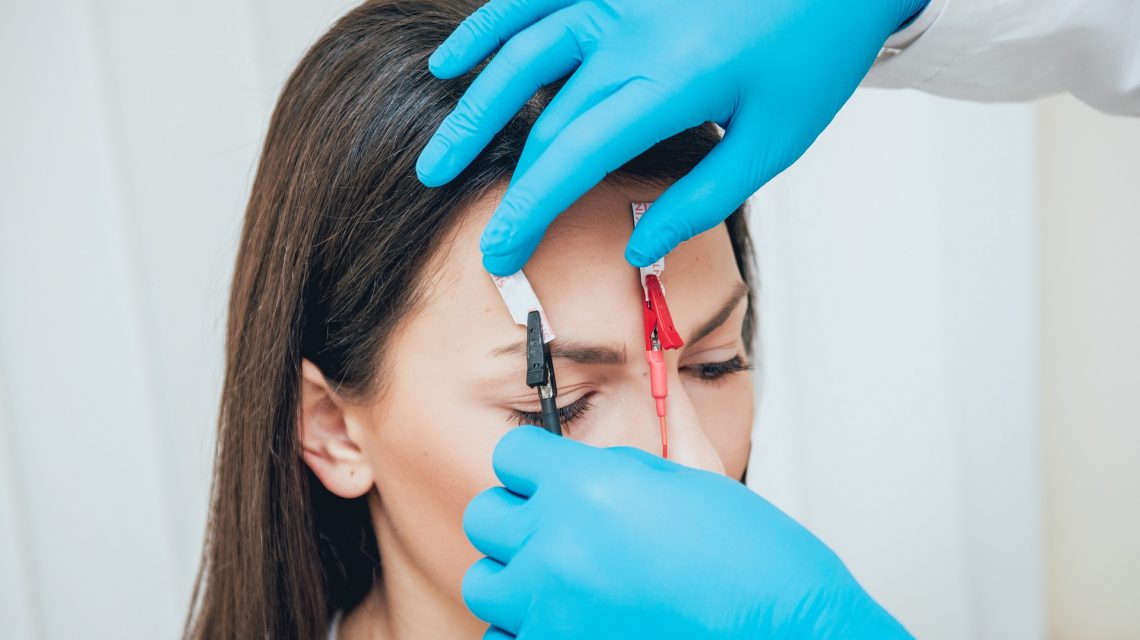Many patients who experience sore jaw and headache are tired are being in chronic pain and are looking for long-term solutions to their constant discomfort. In order to treat sore jaw and headaches, we need to establish a correct diagnosis. That often requires the use of TENS, specifically a low frequency J5 Myomonitor.
Relaxing the masticatory muscles and decompressing the temporomandibular joints is a logical and recognized first step in the therapeutic medical model for treating TMD patients, and those experiencing sore jaw and headaches, in order to re-establish homeostasis to the human body. Compression, strain, torque and rotations all add to pain and other symptoms. Establishing a “physiologic” rested position for the mandible is one of the most crucial yet, highly overlooked principles for effective diagnosis and treatment of the TMD patient within the dental profession.
The J5 Dental TENS (Transcutaneous Electrical Nerve Stimulation) is approved for neurally-mediated muscle stimulation of both the fifth and seventh cranial nerves. The Dental TENS technology has a 50 year proven track record for effective bite recordings before, during and post treatment bite management. Neuromuscular-trained clinicians have been seeing its positive impact on their pain patients who present with mandibular postural compromises, challenging occlusal and joint problems, breaking restorations, ringing in the ears, ear congestion, pressure behind the eyes, vertigo, migraines, and pain. Sore jaw and headaches are often treated with medication but when properly diagnosed, this condition can be resolved permanently if correctly treated.
The main purpose for ULF TENS is to help the dentist determine a more optimal mandibular jaw position when recording a physiologic maxillo-mandibular inter-occlusal jaw registration. Having the spastic muscles relaxed prior to recording a bite registration is therapeutically and clinically beneficial and results in much more accuracy when it comes to the subsequent treatment protocols when it comes to resolving sore jaw and headaches.
Technical Information of J5 Myomonitor TENS:
Output Voltage of the J5 Myomonitor TENS (maximum – each side), -75 +/- 10 volts. (These are absolute values and do not represent typical levels of patient stimulation).
Output current is -18 mA to -24 mA. (Typical output current is -8 to -12 mA).
Interval pulse is 1.5 +/- -0.15 seconds
A WORD TO THOSE PATIENTS WITH CHRONIC TIGHT MUSCLES:
It’s been my observation that patients who have chronic hypertonic muscles (tense patients) may experience discomfort during low frequency TENSing. This would not be unusual for those individuals who have a long history of chronic tight muscles. J5 Myomonitor TENS can feel annoying to some, due to their resistance to muscle splinting while trying to relax the muscles.
For best TENSing results, it is best to allow the TENS to do the work and relax into the flow of the pulse as best as possible.
TENSing is a different type of relaxation. Low frequency TENS is a physiologic relaxation modality, but we do see some individuals that find it irritating. Knowing what ultra low frequency TENS is about will help minimize any misunderstanding, anticipations and pre-conceived ideas about muscle relaxation with ULF TENS.
ULF TENS Safety:
Safety of TENS devices has been scrutinized by the medical community over the past 40 years. The scientific literature is unanimous in validating the safety of TENS devices. This is an excerpt from an FDA publication titled “An Introduction to Electrical Nerve Stimulation: TENS” dated August 1986, published by Center for Devices and Radiological Health branch of the FDA:
“The approximately one hundred publications from the most recent years are virtually unanimous in TENS safety. The notable exception is a necessary awareness of potential fetal stimulation during labor pain. In all other aspects, TENS risk is limited to minor and easily remedied skin irritations from electrodes and electrode gels in a rather small number of reported cases.”
The U.S. Food and Drug Administration has very specific guidelines for all manufacturers in listing of FDA’s Indications. Contraindications, Warnings, Adverse Effects and Precautions (J5 Myo-monitor Operating Guide, 2015, pp 2-3). “ Shorting out” or injuring the nervous system is not a listed adverse effect or precaution of TENS devices and can not be attributed to TENS therapy.

